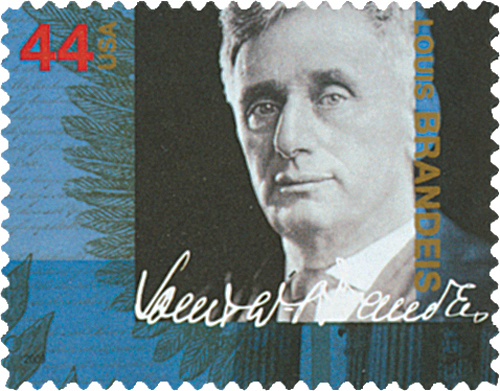
# 81907 - 1988 Louis Brandeis Cover
Birth Of Louis Brandeis
Brandeis grew up surrounded by books, music, and politics. He was a serious student and graduated from high school at the age of 14. He then left the country for a few years with his family and attended the Annenschule in Dresden, Saxony.

After returning to the US in 1875, Brandeis entered Harvard Law School though he didn’t have a formal college degree. He was a top student, but the large amount of reading took a toll on his eyes. In fact, his eyes got so bad, doctors recommended he drop out of school. Instead, he paid fellow students to read the textbooks aloud while he memorized the legal principles. Brandeis’ grades didn’t suffer – and in fact, he graduated as valedictorian with the highest GPA in school history, a record that stood for 80 years.
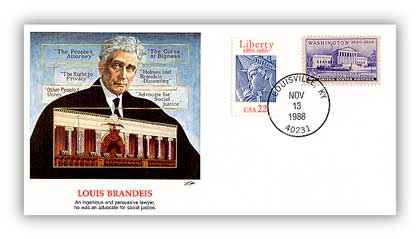
Brandeis remained at Harvard for another year, continuing his studies, before being admitted to the bar in 1878. The following year, he opened a law practice with a classmate. The two worked together to write one of the most famous law articles in history, “The Right to Privacy.” Also during this time, Brandeis remained in close connection to Harvard, helping found the Harvard Law School Association.
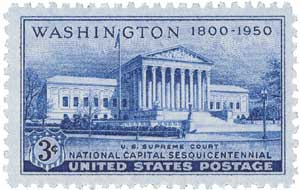
Brandeis’ success as a lawyer enabled him to take cases without pay, to aid in public causes. He helped to save the Boston subway and fought against the New Haven Railroad’s transportation monopoly. Brandeis also helped industrial laborers get legal protection. And in 1908, he introduced the “Brandeis brief,” which used expert testimony from people in other professions to help support his case. This helped to establish a new precedent in how evidence was presented.
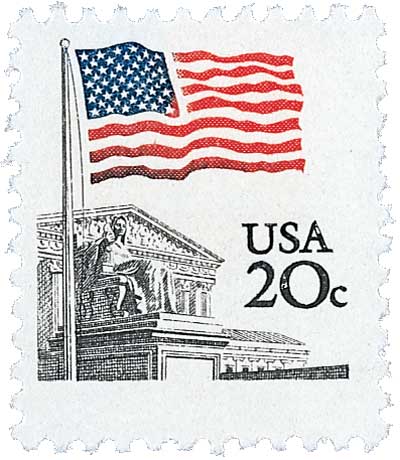
By 1913, Brandeis was a counselor to president Woodrow Wilson. The President offered him a position in his cabinet but Brandeis preferred his law work. Then in 1916, Wilson nominated Brandeis to the Supreme Court. Some opposed his nomination, claiming he had radical views, though some of this opposition was anti-Semitic. Brandeis was the first Jewish person ever nominated to the Supreme Court. But in the end, he was confirmed and joined the court that June.
On the court, Brandeis was a liberal reformer who championed individual rights and social justice. In the Whitney v. California case, he formulated principles for protecting free speech when unpopular views are expressed during a time of emergency. This was followed by his historical dissent on Olmstead v. US, where Justice Brandeis defined privacy as “the right to be let alone – the most comprehensive of rights and the right most valued by civilized men.” Brandeis’ ardent defense of the right to privacy would go on to have a continuing influence on the Supreme Court and American life.
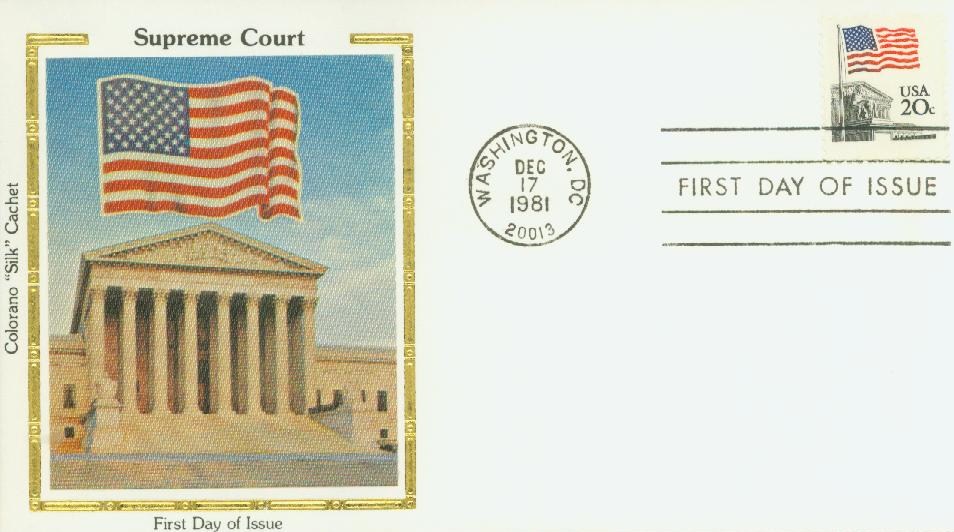
Brandeis retired from the Supreme Court on February 13, 1939, and died two years later on October 5, 1941. Although it was mentioned nowhere in the Constitution, his privacy argument gained powerful support. After his death, the high court applied Brandeis’ Olmstead dissenting opinion to cases.
In the years since his death, several schools have been named in Brandeis’ honor. There are also two communities in Israel named after him.
Click here to read Brandeis’ Supreme Court decisions.
Birth Of Louis Brandeis
Brandeis grew up surrounded by books, music, and politics. He was a serious student and graduated from high school at the age of 14. He then left the country for a few years with his family and attended the Annenschule in Dresden, Saxony.

After returning to the US in 1875, Brandeis entered Harvard Law School though he didn’t have a formal college degree. He was a top student, but the large amount of reading took a toll on his eyes. In fact, his eyes got so bad, doctors recommended he drop out of school. Instead, he paid fellow students to read the textbooks aloud while he memorized the legal principles. Brandeis’ grades didn’t suffer – and in fact, he graduated as valedictorian with the highest GPA in school history, a record that stood for 80 years.

Brandeis remained at Harvard for another year, continuing his studies, before being admitted to the bar in 1878. The following year, he opened a law practice with a classmate. The two worked together to write one of the most famous law articles in history, “The Right to Privacy.” Also during this time, Brandeis remained in close connection to Harvard, helping found the Harvard Law School Association.

Brandeis’ success as a lawyer enabled him to take cases without pay, to aid in public causes. He helped to save the Boston subway and fought against the New Haven Railroad’s transportation monopoly. Brandeis also helped industrial laborers get legal protection. And in 1908, he introduced the “Brandeis brief,” which used expert testimony from people in other professions to help support his case. This helped to establish a new precedent in how evidence was presented.

By 1913, Brandeis was a counselor to president Woodrow Wilson. The President offered him a position in his cabinet but Brandeis preferred his law work. Then in 1916, Wilson nominated Brandeis to the Supreme Court. Some opposed his nomination, claiming he had radical views, though some of this opposition was anti-Semitic. Brandeis was the first Jewish person ever nominated to the Supreme Court. But in the end, he was confirmed and joined the court that June.
On the court, Brandeis was a liberal reformer who championed individual rights and social justice. In the Whitney v. California case, he formulated principles for protecting free speech when unpopular views are expressed during a time of emergency. This was followed by his historical dissent on Olmstead v. US, where Justice Brandeis defined privacy as “the right to be let alone – the most comprehensive of rights and the right most valued by civilized men.” Brandeis’ ardent defense of the right to privacy would go on to have a continuing influence on the Supreme Court and American life.

Brandeis retired from the Supreme Court on February 13, 1939, and died two years later on October 5, 1941. Although it was mentioned nowhere in the Constitution, his privacy argument gained powerful support. After his death, the high court applied Brandeis’ Olmstead dissenting opinion to cases.
In the years since his death, several schools have been named in Brandeis’ honor. There are also two communities in Israel named after him.
Click here to read Brandeis’ Supreme Court decisions.




